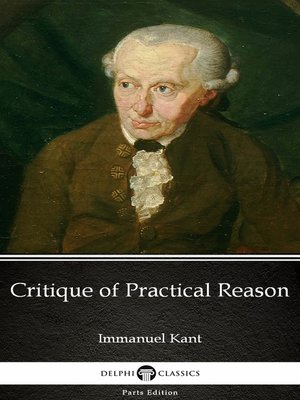


Among the three famous critical exposures by Immanuel Kant (1724-1804), the Critique of Practical Reason (1788) is generally pointed out as the great moral project of the Königsberg philosopher. A theoretical essay is made in which it seeks to unveil Kantian knowledge. The purpose of this article is to present a study on the critical work of Kant's practice. The final section, the Doctrine of Method, offers suggestions in educating people in the use of pure practical reason.Ī seminal text in the history of moral philosophy, this volume offers the most complete statement of Kant's theory of free will and a full development of his practical metaphysics.Instituto federal de Educação, Ciência e Tecnologia de Santa Catarina The Dialectic make the assumption that immortality and God exist, arguing that pure practical reason falls into error when it expects perfection in this world we should anticipate finding perfection in the next world, with God's help. The Analytic defines the ultimate moral principle, the categorical imperative, and argues that to obey it is to exercise a freedom. This Critique comprises three sections: the Analytic, the Dialectic, and the Doctrine of Method. The philosopher offers an argument concerning the summum bonum of life: people should not simply search after happiness, but follow the moral law and seek to become worthy of the happiness that God can bestow.

With this work Kant establishes his role as a vindicator of the truth of Christianity he approaches his proof by presenting positive affirmation of the immortality of the soul and the existence of God.

The second of Kant's three critiques, Critique of Practical Reason forms the center of Kantian philosophy published in 1788, it is bookended by his Critique of Pure Reason and Critique of Judgement.


 0 kommentar(er)
0 kommentar(er)
